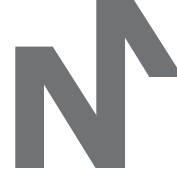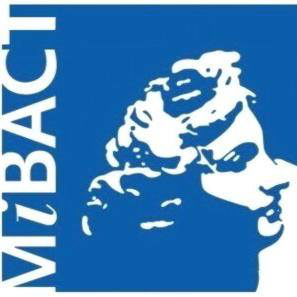Summary (English)
This season’s work as part of the “Organizzazione, gestione e trasformazione di una zona suburbana: il settore della Porta Ercolano di Pompei, tra spazio funerario e spazio commerciale” project concentrated on workshops 10 and 13 (previously unexcavated) and workshops 28-30 (excavated in 2014).
Workshops 10 and 13
These structures were excavated with the aim of understanding the modes and periods in which the sector north of the Via dei Sepolcri was structured as a series of workshops opening onto a colonnaded portico, which from the entrance to the Villa of the Mosaic Columns, runs parallel to the road towards the west. The choice of investigating these workshops also depended on the possibility of putting them into relation with the structure of the villa. Firstly, a 1:50 plan and elevation was drawn, the base both for the excavations and study of the walls. The excavation, mainly concentrated on the rear parts of workshops 10 and 13, did not produce the hoped for results. In fact, both 10 and 13 were, at the time of the eruption, undergoing restructuring, and in the case of workshop 13, excavations carried out in the 1960s had disturbed the stratigraphy.The excavation of workshop 10
Work concentrated on room 10.2 to the rear of the workshop. The entire room was excavated down to natural. The situation had been compromised by work that was being undertaken at the moment of the eruption. A large pit extending across almost the entire room cut the natural layer on which the foundations of the perimeter walls were built. At the time of the eruption, the room was still not paved. To the east, in room 10.3 it was only possible to expose the floor in use in 79 A.D. A few centimetres of the eruption stratigraphy was preserved in the room. The floor was a simple beaten earth surface and the wall plaster rested on top of it. It is probable that a new floor was going to be laid.The excavation of workshop 13
Work was concentrated to the rear in room 3 where a kiln/oven was present in the south-west corner (the mouth of the kiln/oven was situated in the adjacent room 2). It was not possible to establish the function of this structure. A large modern trench, probably relating to the 1960s excavations, was exposed. The floor make up was present in the eastern part of the room but there was no trace of the actual floor, which had probably been removed or was still to be laid in 79 A.D. The position of the modern trench made it impossible to establish whether the kiln/oven had been built at the same time as this floor or sometime later.The excavation of room 2 in front of the kiln/oven mouth and in the western part of the room showed the stratigraphy to have been disturbed by several elements. In front of the kiln/oven were a number of small pits containing burnt remains, ash, and modern materials (majolica) indicating the structure’s use in the modern period.
The analyses of the standing structures suggests that all the walls of the workshops to the east and west of the entrance to the Villa of the Mosaic Columns, were built in a single construction phase. At present, the evidence from the pottery finds is insufficient to provide a date for this phase, neither is it possible at present to establish whether the workshops to the west (15-30) were part of this same project.The excavation of workshops/shops 28 and 30
The work completed the documentation and investigated some questions that had been left suspended.
A photogrammetric survey was made of the potter’s workshop.Workshop 28
Several trenches were opened with the aim of further defining some elements uncovered in 2014. A trench was opened by the well, in a space in which the latest level was badly damaged or no longer visible. An earlier structure was visible but its edges and function were not clear. In the north-east corner, part of the unfired vases were removed in order to gain an understanding of what they rested on. It was seen that the vases seemed to rest directly on a layer of sediment that covered the workshop’s final occupation layer. They were not resting on any structure (shelf…).Workshop 30
The excavations in room 30-1 completed knowledge of the workshop’s organisation. Two main elements emerged.
A channel pre-dating the kiln was uncovered. However, no level in connection with the portico was visible.
In room 30-2, the final occupation levels associated with the working of the kiln were intercepted. They contained material relating to the workshop’s production. These levels overlay an earlier occupation layer, the first in phase with the kiln. It contained a large amount of pottery fragments (mainly thin walled small jugs with sandy decoration produced in the workshop).Sectors 30-4 and 30-5
One of the main objectives was to gain an understanding of the last workshop in the portico and how it was entered from the west. The excavations exposed the foundations of the west wall, built abutting the terrain, and a pre-Roman burial. Although the latter was covered by modern/contemporary levels, it was intact. The tomb group was made up of 12 ceramic vessels and elements from metal fibulae, datable to around the 4th century B.C. The vases were one lekane and lid, two red-figure lekythoi, a kantheros with monochrome “sovvradipinta” decoration, an oinochoe, an amphora and askos in red-figure ware, cup and small cup in black glaze ware, and a coarse ware amphora. The study of this assemblage will provide details on dating and production areas.Two more burials were found to the west: burial SP30060 was empty, excavated in the past, and burial SP30099 that will be studied in coming months. The excavations also revealed a flight of steps that provided access to workshop 30.
The investigation of this sector showed that the west wall of workshop 30 was built abutting the terrain, respecting the presence of the burials. They must have been marked by a tumulus, which is no longer visible as it was probably removed in the past.
- Laëtitia Cavassa - Centre Camille Jullian, CNRS, UMR 7299-AMU
Director
- Annalisa Capurso
- Fabio Galeandro - Soprintendenza Speciale per i Beni Archeologici di Pompei
- Grete Stefani - Soprintendenza Speciale per i Beni Archeologici di Napoli e Pompei
- Massimo Osanna - Soprintendenza Speciale per i Beni Archeologici di Pompei
Team
- Alexia Lattard - Centre Camille Jullian, CNRS, UMR 7299-AMU
- Géraldine Sachau-Carcel - PACEA - UMR 5199, Équipe A3P - Anthropologie des Populations Passées et Présentes ,Université de Bordeaux
- Henri Duday - CNRS
- Anaïs Daumont Marx
- Aude Painchault
- Audrey Delvigne
- Bastien Lemaire (Université Paul Valéry - Montpellier 3 CNRS - UMR 5140 Archéologie des Sociétés Méditerranéennes - Équipe TESAM)
- Camille Galouye
- Carla Rosa (Università di Salerno, Fisciano)
- Giovanni Festa- Università di Salerno, Fisciano
- Giulia Ciucci - IRAA, Aix-Marseille Université / Università “l’Orientale” di Napoli
- Léo Cagnard (Université Paul Valéry - Montpellier 3 CNRS - UMR 5140)
- Raphael Golosetti
- Rémi Rêve - Aix-Marseille Université
- Guilhem Chapelin- Centre Jean Bérard, USR3133 CNRS - Ecole Française de Rome
- Sandrine Mencarelli
- Agnès Oboussier - Aix Marseille Univ, CNRS, MCC, CCJ, F-13000, Aix-en-Provence, France
- Nicolas Laubry - Université de Paris-Est
- Nicolas Monteix - Université de Rouen
- Sandra Zanella – Università Paris 1 - Sorbonne / Collège de France AOROC UMR8546 CNRS | ENS
- Saverio De Rosa- Università di Studi di Bari
- Frédéric Pauvarel – Conseil général PACA
- Luana Toniolo - Università Ca’ Foscari, Venezia
- François Fouriaux - Maison de l’Archéologie, Chartres
Research Body
- Centre Jean Bérard, USR3133 CNRS - Ecole Française de Rome
Funding Body
- Ecole française de Rome, Centre Camille Jullian, mecenati francesi : CMD2, Artfusion, Art et luxe e privati
- Ministère des Affaires Etrangères et du Développement Industriel français
Images
- No files have been added yet




